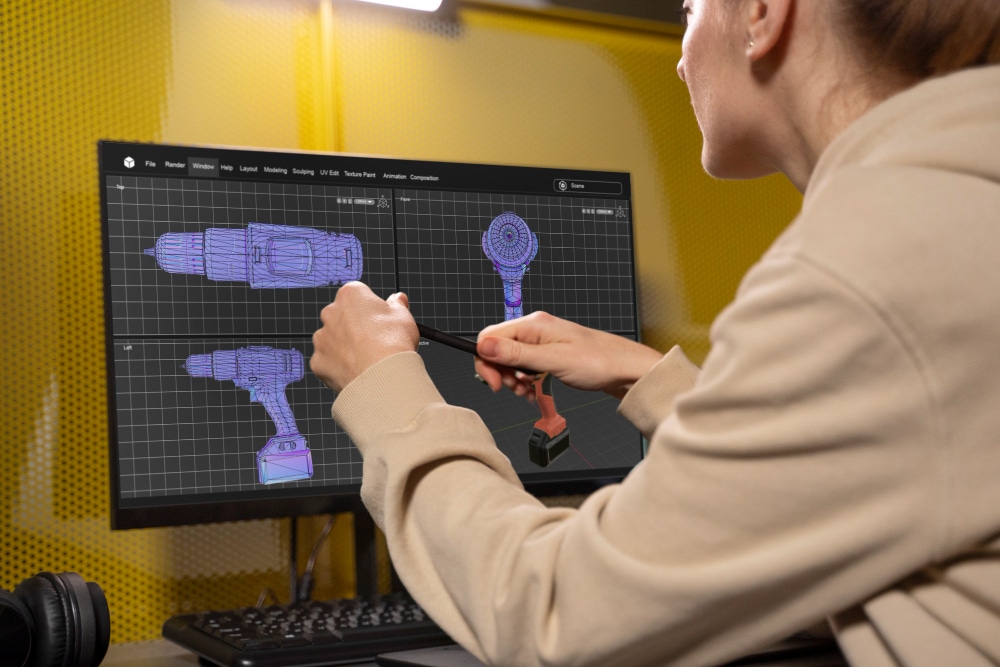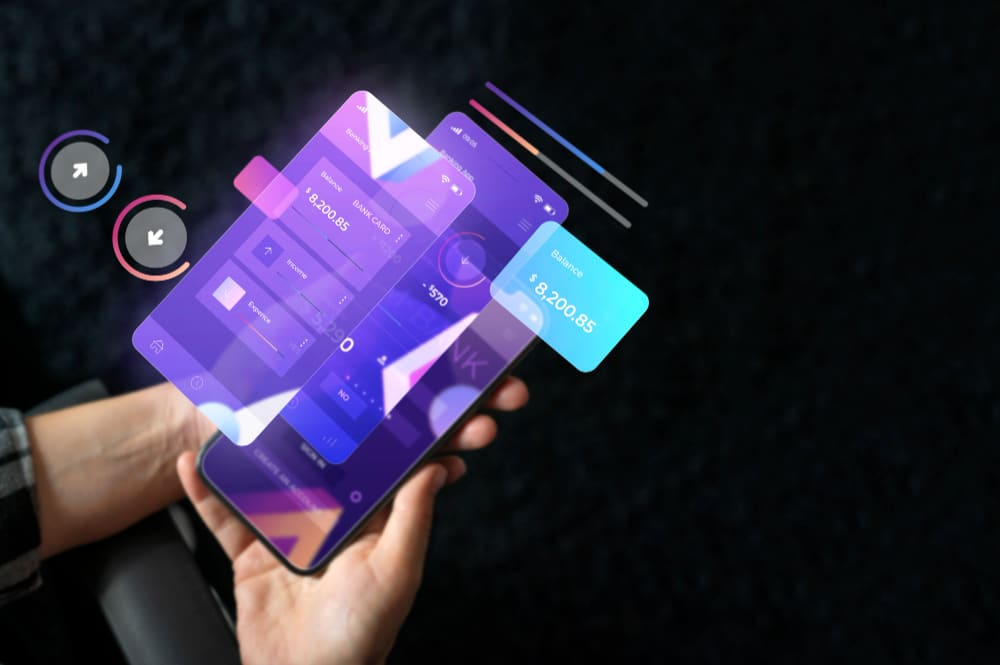What are the top web design trends for 2024 that you believe can drive business growth? Here is what 9 thought leaders have to say.
- Embrace Immersive Interactive Experiences
- Leverage AI-Driven Personalization
- Prioritize Seamless User Experiences
- Ultra-Personalize with Data Insights
- Integrate Predictive AI for Design
- Adopt AI Personalization and Automation
- Customize with AI and Mobile-First Design
- Create Immersive Storytelling Experience
Embrace Immersive Interactive Experiences

Here are my top web design trends for 2024 that can drive business growth:
- Immersive, interactive experiences. Think 3D elements, animations, and gamification. Engage users; keep them on your site longer.
- Personalization is key. Tailor content, offers, and design to each user. Use data to create a unique experience. Boost conversions, loyalty.
- Mobile-first design. More than half of web traffic is mobile. Prioritize fast load times, intuitive navigation, and streamlined content. Essential for success.
- Accessibility is non-negotiable. Inclusive design benefits everyone. Cater to all abilities. Reach a wider audience; demonstrate social responsibility.
- Minimalism and whitespace. Clean, uncluttered designs. Focus on essential content. Improve readability, comprehension, and aesthetics.
- Micro-interactions and animations. Small, purposeful interactions. Provide feedback, guide users, add delight. Enhance user experience; create a memorable brand.
- Voice interface integration. Prepare for voice search optimization. Incorporate voice navigation. Adapt to changing user behaviors.
- Invest in these trends. Gain a competitive edge. Drive engagement, conversions, and growth. The future of web design is exciting!
Casey Jones, Founder and Head of Marketing, CJ&CO
Leverage AI-Driven Personalization

In the realm of web design at Zibtek, where innovation meets functionality, staying ahead of trends is pivotal for driving business growth. As we look into 2024, several web design trends stand out for their potential to enhance user engagement, improve user experience, and ultimately contribute to business success.
- AI-Driven Personalization:
Artificial Intelligence (AI) continues to redefine personalization in web design. By leveraging AI to analyze user behavior, websites can now deliver highly personalized experiences, showcasing content, products, and services tailored to individual preferences. This level of personalization not only enhances user engagement but also significantly increases conversion rates, driving business growth.
- Voice User Interface (VUI):
With the rise of voice search and digital assistants, incorporating Voice User Interface (VUI) into web design is becoming increasingly important. Websites that offer voice navigation and command capabilities provide a more accessible and user-friendly experience, catering to a broader audience and setting the stage for higher engagement levels.
- Dark Mode Aesthetics:
The popularity of dark mode aesthetics is more than just a visual preference; it’s about offering users a choice that enhances usability, reduces eye strain, and saves battery life on mobile devices. Implementing dark mode options on websites can significantly improve the user experience, making it a valuable design choice for businesses looking to stand out.
- Micro-Interactions and Motion UI:
Micro-interactions and Motion UI elements bring websites to life, making the user experience more engaging and interactive. Whether it’s animated buttons, scroll-triggered effects, or dynamic backgrounds, these subtle animations can significantly boost user engagement and time spent on the site, contributing to business growth.
In conclusion, the top web design trends for 2024 focus on creating more personalized, accessible, and engaging user experiences. At Zibtek, we are committed to incorporating these trends into our web design projects, recognizing their potential to drive business growth through improved user engagement and satisfaction.
Cache Merrill, Founder, Zibtek
Prioritize Seamless User Experiences

From my background in navigating the digital landscape for various businesses, including a successful venture into the e-commerce space with Shopify platform integrations, I’ve identified vital web design trends that promise substantial growth in 2024. Leveraging Shopify’s dynamic capabilities has taught me the importance of seamless user experiences (UX)—a trend that’s steering the web design arena. Incorporating intuitive layouts and streamlined navigation significantly uplifts conversion rates, proving that simplicity coupled with sophistication is key.
Another critical insight from my experiences, particularly in optimizing online presence through targeted SEO strategies, is the irrefutable value of mobile-first design. With the burgeoning reliance on smartphones for internet access, optimizing web design for mobile users is imperative. My efforts in enhancing site speeds and ensuring responsive design on mobile platforms have shown direct correlations to lower bounce rates and higher engagement levels, underscoring the necessity for businesses to prioritize mobile UX in their design strategy.
AI and Machine Learning (ML) technologies are also pivotal trends shaping the future of web design. Through my consultancy ventures, I’ve helped integrate AI-driven chatbots and personalized content generation, leading to enriched user interactions and tailored experiences. The data-driven customization offered by AI and ML not only elevates user engagement but also fosters brand loyalty, making it a crucial element for businesses aiming for growth in 2024.
In synthesizing these observations, the convergence of seamless UX, mobile-first design, and AI-infused personalization emerges as the cornerstone for driving business growth through web design. My journey through IT and digital marketing landscapes, culminating in advising startups on D2C marketing strategies, has solidified my belief in the transformative power of these trends when executed with precision and creativity.
Gary Gilkison, Principal Analyst, Riverbase Cloud
Ultra-Personalize with Data Insights

As someone deeply immersed in the web design and marketing space for over two decades, I’ve closely observed how certain design trends not only enhance user experience but significantly contribute to business growth. One key trend I foresee continuing into 2024 is the emphasis on ultra-personalized content and experiences. Tailoring website content dynamically based on user behavior and preferences, as we’ve implemented at OneStop Northwest, has led to increased engagement and conversion rates. This strategy relies on data to deliver relevant content, making each visitor’s experience unique and significantly more engaging.
Another trend is the integration of voice search optimization. As voice search becomes increasingly popular, optimizing for voice queries has become crucial. This involves structuring content to answer questions directly and ensuring the site loads quickly. At OneStop Northwest, focusing on conversational keywords and FAQs has improved our visibility in voice search results, tapping into a rapidly growing segment of web users.
Finally, the push for accessibility cannot be overstated. Making websites accessible to individuals with disabilities isn’t just a legal requirement; it’s a moral and business imperative. Incorporating design elements that cater to the needs of all users, such as an alt text for images and keyboard navigation, has broadened our audience’s reach at OneStop Northwest and fostered a more inclusive digital environment. These decisions not only reflect our company’s values but have also opened our doors to a wider customer base, contributing to overall business growth.
In sum, personalization, voice search optimization, and accessibility are key trends driving the web design space. Adopting these trends has been central to our approach at OneStop Northwest, culminating in enhanced user engagement and business growth.
Dylan Cleppe, Co-Founder and CEO, OneStop Northwest LLC
Integrate Predictive AI for Design

Through my journey from a naval officer to a digital marketing entrepreneur, I’ve navigated numerous industries, adapting to rapid technological changes along the way. One trend I see as essential for web design in 2024 to drive business growth is the smart integration of data analytics and AI for predictive design. This means designing websites that not only analyze user behavior in real-time but also anticipate user needs before they explicitly express them. For instance, in my second start-up, we leveraged AI to offer personalized content suggestions, significantly reducing bounce rates and improving user engagement metrics. This approach uses technology not just as a tool but as a proactive component of the web design, enhancing the overall user experience.
Another critical trend is the focus on mental accessibility in web design. Beyond just making websites accessible to those with physical impairments, this involves creating designs that are intuitively navigable for users with cognitive disabilities or those experiencing mental fatigue. For example, we’ve implemented simplified navigation paths and clear, understandable content structures in our projects, which has markedly improved user satisfaction and accessibility scores. This commitment to inclusivity not only broadens your website’s audience but also aligns with a growing societal demand for digital spaces that respect mental diversity and well-being.
Lastly, embracing the decentralized web, or Web3 technologies, is becoming increasingly important. This involves designing for interoperability with blockchain technologies, cryptocurrencies, and NFTs, opening up new avenues for user engagement and monetization. In my current start-up, we’re exploring how these technologies can be integrated into our digital marketing tools to offer more secure, transparent, and personalized user experiences. This foresight into adopting and integrating next-generation tech sets a foundation for not just keeping pace with digital evolution but leading it, driving significant business growth through innovation and adaptability.
Joe Amaral, Founder and COO, Anthem Software
Adopt AI Personalization and Automation

In my extensive experience as a growth-focused executive and through my work at Thinksia, where we emphasize innovation and the strategic use of technology to drive marketing success, I’ve identified a few web design trends that I believe are pivotal for business growth as we move towards 2024.
One significant trend is the movement towards AI-driven personalization and automation in web design. This isn’t just about chatbots or automated customer service; it’s about creating websites that adapt in real-time to the user’s needs, interests, and behavior. For instance, using AI to dynamically change the content, images, or offers a user sees based on their past interactions with the website can massively boost engagement and conversion rates. We’ve implemented such strategies in our clients’ campaigns, witnessing the power of AI to personalize at scale and deliver exceptional results.
Another key trend is the emphasis on immersive, experiential web design. This goes beyond just visual appeal, creating interactive experiences that deeply engage users and leave lasting impressions. We’ve leveraged technologies like WebXR to develop immersive digital environments for clients looking to stand out in a crowded marketplace. These are not gimmicks but strategic implementations designed to captivate and convert by offering users a memorable journey through your digital ecosystem.
Lastly, the integration of sustainability into web design philosophy is not just a trend but a necessity as we head into 2024. From optimizing for lower energy consumption (via efficient coding and lighter page loads) to making ethical and sustainable business practices front and center on websites, these elements resonate deeply with today’s consumers. Through our consulting services, we’ve helped businesses not only communicate their sustainability efforts effectively but also implement eco-friendly design practices, enhancing brand reputation and customer loyalty.
Each of these trends, from AI-driven personalization to immersive experiences and sustainability, contributes to a larger narrative of creating more intelligent, engaging, and responsible digital spaces that reflect a company’s brand and values while driving business growth. In applying these insights to our clients’ strategies at Thinksia, we’ve seen the substantial impact that thoughtful, innovative web design can have on a brand’s success in the digital age.
Timothy J Williams, Principal Consultant, Thinksia
Customize with AI and Mobile-First Design

In my role spearheading First Pier, an e-commerce growth agency based out of Portland, Maine, I’ve garnered experience in leveraging web design to fuel business growth. Through constant engagement with the evolving digital landscape and implementing innovative strategies for our clients, I’ve pinpointed a few critical trends for 2024 that are poised to significantly drive business growth.
One pivotal trend is the integration of AI and machine learning to customize user experiences. By analyzing user behavior, preferences, and engagement, we can dynamically tailor website content, making interactions more relevant and engaging. This approach not only enhances user satisfaction but also significantly boosts conversion rates. For instance, incorporating AI-driven personalization for an online retailer enabled them to offer product recommendations that matched their customers’ unique tastes and previous shopping behaviors, substantially increasing repeat purchases.
Another trend that can’t be overlooked is the emphasis on mobile-first design. With the majority of web traffic now coming from mobile devices, designing websites with a mobile-first approach ensures an optimal user experience across all devices. This involves responsive design, fast loading times, and intuitive navigation tailored for smaller screens. Implementing these principles has consistently led to improved performance metrics, such as longer session durations and lower bounce rates.
Furthermore, the trend towards immersive, interactive web experiences continues to gather momentum. By incorporating elements such as video content, 360-degree product views, and interactive storytelling, we can captivate users’ attention more effectively. These interactive elements not only make a website more engaging but also help in conveying the brand’s message in a more impactful manner. Our work with various clients has shown time and again that websites offering an immersive user experience enjoy higher engagement rates and ultimately, better conversion metrics.
These trends—AI-driven customization, mobile-first design, and immersive experiences—are not just fleeting. They represent a broader shift towards creating more personalized, accessible, and engaging digital environments. From our successes at First Pier, it’s clear that businesses that adapt to these trends will be well-placed to thrive in the competitive digital marketplace of 2024.
Steve Pogson, Founder, First Pier
Create Immersive Storytelling Experiences

In launching and growing Frostbeard Studio, I’ve closely observed and adapted to digital trends that align with our brand ethos and appeal to our audience. One web-design trend for 2024 that I believe is critical for driving business growth is creating immersive storytelling experiences online. For our business, this meant developing a website that not only sells products but also tells a story about our love for books, candles, and the cozy ambiance they create together. This approach has resulted in increased customer engagement and higher sales as people connect with our brand’s narrative.
Another trend is the emphasis on sustainability and transparency. We’ve incorporated this into our web design by clearly communicating our handmade process, our commitment to using sustainable materials, and the story behind each scent. This level of openness and ethical commitment resonates deeply with our customer base, driving loyalty and repeat purchases.
Lastly, personalization and interactive elements have become paramount. We’ve utilized quizzes and scent finders on our site, allowing customers to discover their perfect candle based on their book genre preferences or mood. This interactive experience not only adds value but also increases the time spent on our site, improving SEO rankings and ultimately sales.
These web-design strategies have not just been about following trends but finding what genuinely works for our unique audience and product range, fostering a strong community around our brand.
Roxie Lubanovic, Co-Founder, Frostbeard Studio
Incorporate AR for Interactive Engagement

In 2024, augmented reality (AR) is expected to be one of the top web design trends that can drive business growth. AR technology allows for a more interactive and immersive user experience, making it ideal for businesses in industries such as retail, real estate, and tourism. By incorporating AR elements into their websites, businesses can showcase their products or services in a more engaging and memorable way, which can lead to increased customer engagement and conversion rates.
Personalization is already a major trend in web design, but it is expected to become even more important by 2024. With the use of artificial intelligence (AI) and machine learning, businesses can gather data on their customers’ preferences and behaviors to create personalized website experiences. This can include customized product recommendations, tailored content and messaging, and even individualized pricing. By providing a more personalized experience, businesses can improve customer satisfaction and loyalty, ultimately driving growth.
With the rise of virtual assistants like Siri and Alexa, voice user interfaces (VUI) are becoming more prevalent in our daily lives. As a result, VUI is expected to be a top web design trend for 2024. By incorporating VUI into websites, businesses can provide a more hands-free and efficient user experience. This is especially valuable for industries such as e-commerce and healthcare, where users may need to perform tasks quickly and easily without using their hands.
Alex Taylor, Head of Marketing, CrownTV

